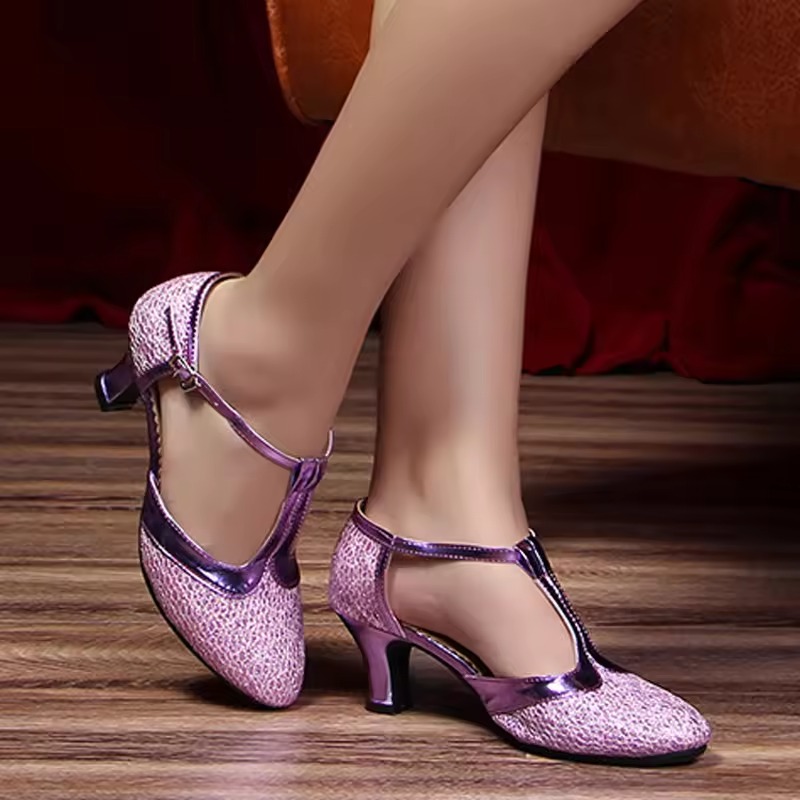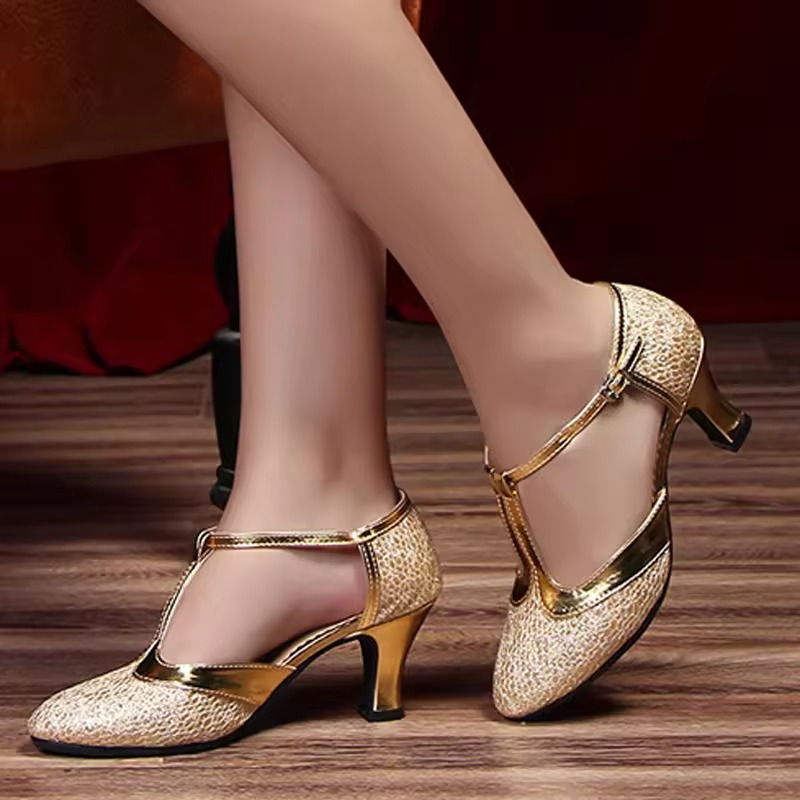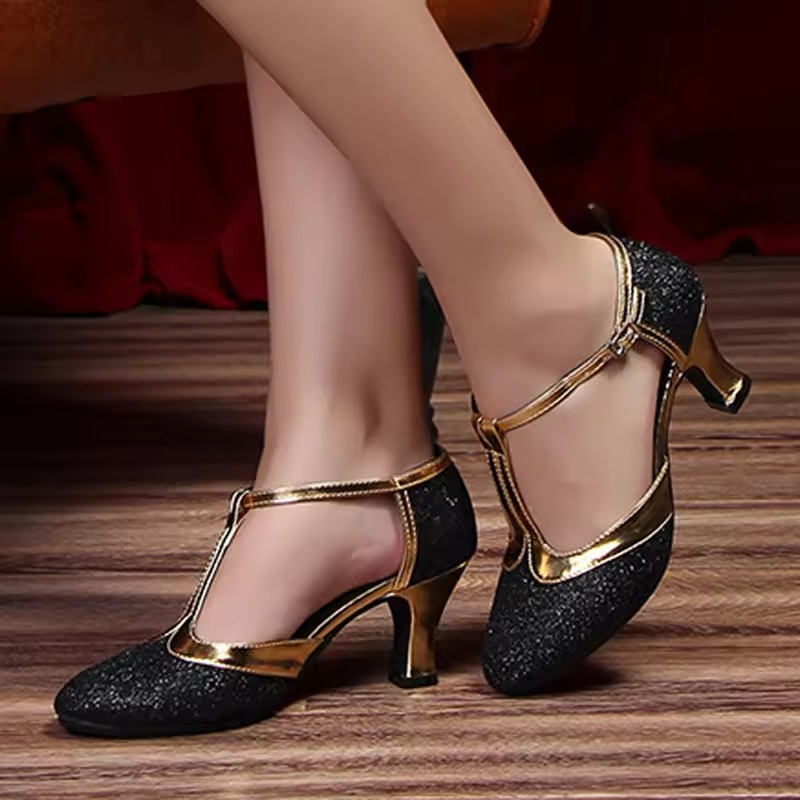The Importance of Proper Ballroom Dancing Shoes
Selecting the right dance shoes for ballroom dancing is not just a matter of style. It’s essential for performance and safety. Quality ballroom dancing shoes can greatly impact your dance experience. Here are a few reasons why they are so important:

- Balance and Stability: The correct shoes provide the necessary grip and support. This helps you maintain balance and stability while dancing.
- Flexibility and Movement: Good dance shoes for ballroom dancing must allow for fluid movement. They should enable you to glide across the dance floor with ease.
- Injury Prevention: Shoes designed for ballroom dancing can help reduce the risk of injuries. They protect your feet by providing cushioning and proper support.
- Improved Dance Technique: With appropriate shoes, you can execute dance moves more precisely. This leads to a better performance and quicker skill improvement.
- Confidence on the Dance Floor: Wearing the right shoes can boost your confidence. Knowing you’re well-equipped allows you to focus on the dance, not your feet.
Overall, investing in a pair of proper ballroom dancing shoes is crucial. They are a tool that helps every dancer perform at their best. So, make sure your dance shoes are up to the task, fitting both your feet and the demands of ballroom dancing.

Different Types of Ballroom Dancing Shoes
When it comes to ballroom dancing, not all shoes are created equal. Different styles and functions cater to the unique demands of the dancers. Knowing the types of dance shoes for ballroom dancing is key to making an informed choice.
Men’s Ballroom Dancing Shoes
Men’s ballroom shoes are typically simple in design but high in functionality. They often feature a low heel which provides stability and assists in performing smooth strides. The standard options are oxford-style lace-ups, which ensure a snug fit. Materials can vary, but leather is a common choice for its durability and ease in sliding across the dance floor.
Key features of men’s dance shoes include:
- Subtle heel for balanced posture
- Firm grip to prevent slips
- Padded insole for extended comfort
- Sleek design that complements dance attire
Women’s Ballroom Dancing Shoes
Women’s dance shoes for ballroom dancing bring both flair and function. They come with varied heel heights to accommodate different preferences and dance styles. Open-toed designs allow greater flexibility, while closed-toed shoes offer more protection. Straps, ranging from simple ankle straps to detailed cross-straps, provide security and add a touch of elegance.
Characteristics of women’s ballroom shoes include:
- Heels designed for posture and performance
- Choices of open or closed toe for style and function
- Straps for added foot support
- Materials like satin or leather that blend beauty and practicality
Choosing the right category of shoes, whether men’s or women’s, plays an important role in ballroom dance. Both dancers need a shoe that will complement their partner’s choice while fulfilling their dance requirements.
Factors to Consider When Selecting Ballroom Dancing Shoes
Selecting the right ballroom dancing shoes is crucial for your performance. Consider these factors for the perfect pair.
Sole Design and Materials
The sole of your dance shoes is vital for the dance floor. Look for shoes with suede or leather soles. These materials offer the right balance of grip and slide. Avoid rubber soles, as they can stick to the floor and obstruct your movements.
Shoe Fit and Comfort
Your shoes should fit snugly without pinching or causing discomfort. A secure fit means better support and less risk of blisters. Choose shoes with a padded footbed for additional comfort during long dance sessions.
Heel Height and Style
Heel height affects your dance posture and balance. Men’s heels are usually low, while women have more options. Decide based on your dance style and personal comfort. The style of the heel, whether flared or slim, also impacts stability.
Quality and Durability
Invest in high-quality dance shoes for longevity. They should withstand rigorous dance routines. Opt for reputable brands that use durable materials. High-quality shoes can also improve your performance and keep your feet safe.
Where to Buy Ballroom Dancing Shoes
Once you know the essential features to look for, it’s time to find where to buy your perfect pair. There are two main options for purchasing dance shoes for ballroom dancing: specialty dancewear stores and online retailers, each with its own benefits.
Specialty Dancewear Stores
For hands-on assistance, visit a specialty dancewear store. Here, you can try on various styles and get expert advice. Benefits of buying from these stores include:
- Personalized fittings by knowledgeable staff
- Ability to test shoes on a dance-like surface
- Immediate purchase with no waiting time
- Support for local businesses
When buying in-store, ensure that the shop caters specifically to ballroom dancers. This way, you can be confident that the selections offered are appropriate for your needs.
Online Retailers
Online retailers provide a convenient alternative, with a wider range of styles and sizes. Consider these advantages of buying online:
- Vast selection of brands and designs
- Competitive pricing and potential discounts
- Reviews from fellow dancers to guide your choice
- Shopping from home at any time
Ensure that the retailer has a clear return policy. This is important if the shoes do not fit as expected or if there are issues with the delivery.
Whether you choose to purchase from a specialty store or online, take the time to review your options carefully. Look for reputable sources with positive reviews and high customer satisfaction rates. By doing so, you’ll find a pair of dance shoes for ballroom dancing that will serve you well on the dance floor.

Caring for Your Ballroom Dancing Shoes
Proper care extends your shoes’ life and keeps them performance-ready. Here’s how to maintain them.
Regular Cleaning
To keep your dance shoes in top condition, clean them after each use. Wipe off dirt from leather shoes with a damp cloth. For suede soles, gently brush with a suede brush. Always dry shoes naturally, away from heat sources.
Storage Tips
Store your shoes in a dry, ventilated area. Use a shoe bag to protect them from dust. Avoid leaving them in your car or in direct sunlight. Inserting shoe trees can help maintain their shape.
When to Replace Your Shoes
Watch for signs of wear, like worn soles or damaged heels. If shoes lose support or comfort, it’s time for a new pair. Regular dancers may need to replace shoes every 6 to 12 months.
Common Mistakes to Avoid When Buying Dance Shoes
Embarking on the journey to find the perfect dance shoes for ballroom dancing can be daunting. To ensure you make a wise investment, steer clear of these common missteps:
Overlooking the Importance of a Good Fit
Just like regular shoes, dance shoes must fit well. A shoe that’s too tight can cause pain, while one that’s too loose can lead to instability or injuries.
Choosing Style Over Function
While it’s tempting to opt for the flashiest pair, remember that function trumps style. Comfort and support are key to your dance performance.
Ignoring the Dance Floor Surface
Different floors require different sole types. A sole perfect for one surface may not work well on another – always consider your main dance environment.
Forgetting About Shoe Maintenance
Dance shoes require care to maintain their condition. Ignoring maintenance can shorten their lifespan and hinder your performance.
Skimping on Quality for a Lower Price
Cheaper shoes may save you money upfront but can cost more in the long run due to lesser quality, frequent replacements, and possible foot issues.
Failing to Check Return Policies
When purchasing, especially online, knowing the return policy is crucial. Difficulty returning unsuitable shoes can leave you with a regrettable purchase.
By noting these common mistakes, you can avoid pitfalls and make a purchase that suits your dance needs perfectly.
A Step-by-Step Guide to Finding the Right Fit
Picking the right dance shoes for ballroom dancing takes more than guesswork. To ensure a precise, comfortable fit, follow these steps:
- Measure Your Feet: Foot size can change over time. Measure both feet for length and width. Use these measurements when selecting shoe sizes.
- Consider Width as Well as Length: Some feet are broader or narrower. Look for shoes that fit the width of your foot to avoid discomfort or sliding.
- Try on Shoes Later in the Day: Feet usually swell as the day goes on. Try on dance shoes in the afternoon or evening for the best fit.
- Wear Appropriate Socks: The thickness of your socks affects shoe fit. Try on shoes with the hosiery you’ll wear while dancing.
- Walk Around in the Shoes: Spend time walking in the shoes. They should feel snug but not tight, and your toes should not be cramped.
- Test on a Dance Surface: If possible, try a few dance steps on a surface similar to what you’ll perform on. This helps gauge sole traction and comfort.
- Check for Slippage: Your heel should not slip out of the shoe when walking or dancing. Make sure the back of the shoe grips your heel properly.
- Assess Arch Support: Good arch support matters for comfort and foot health. Your arch should feel supported, but not pressured.
- Bend and Flex the Shoe: You’ll need flexibility to dance well. The shoe should bend with your foot and not feel too stiff.
- Stand on Your Toes: Ballroom dance shoes must allow for toe standing. Test this to ensure there’s no pinching or excessive pressure.
Following this guide will lead you to dance shoes for ballroom dancing that feel like they’re made just for you. Remember, the right pair is out there – it’s all about finding the fit.